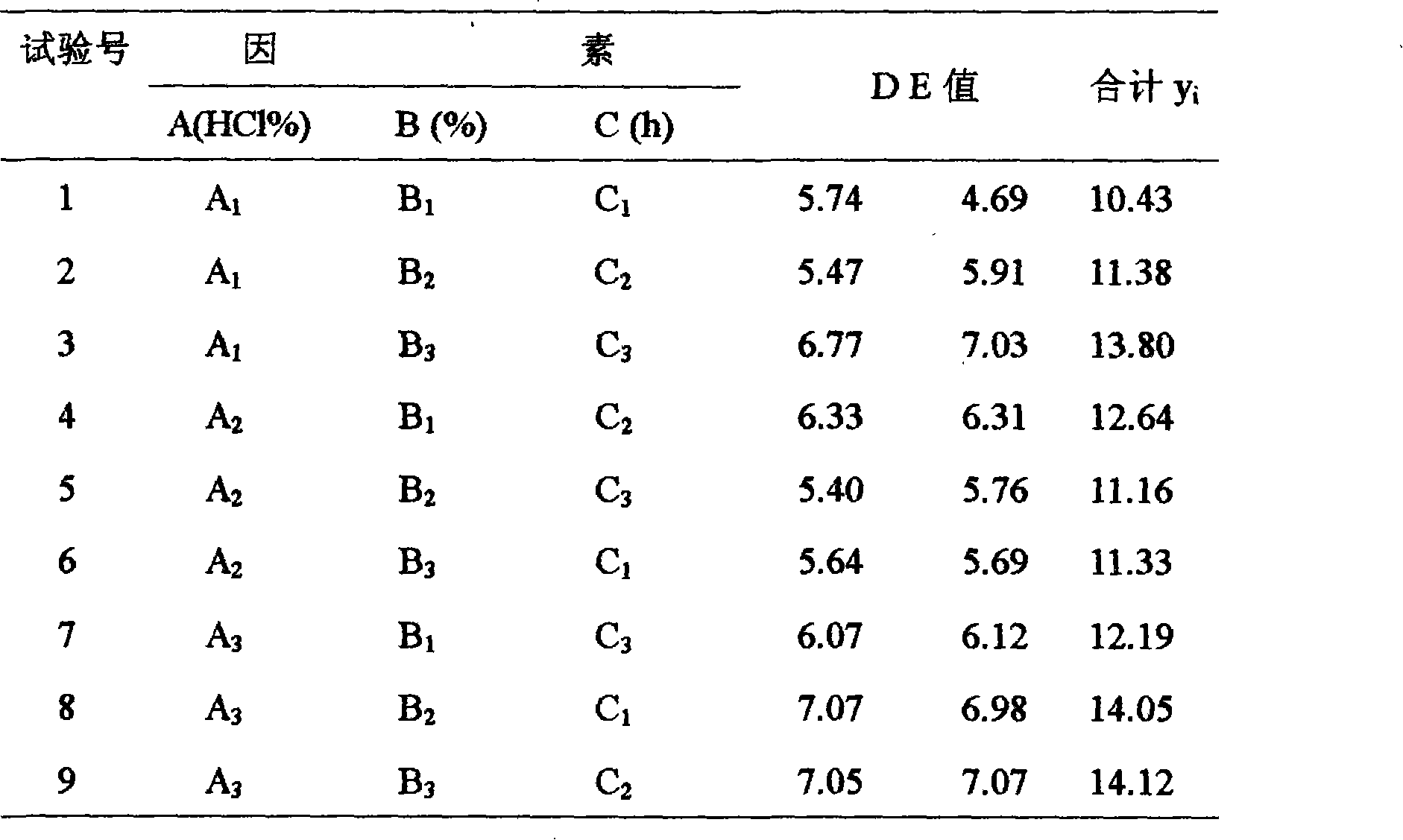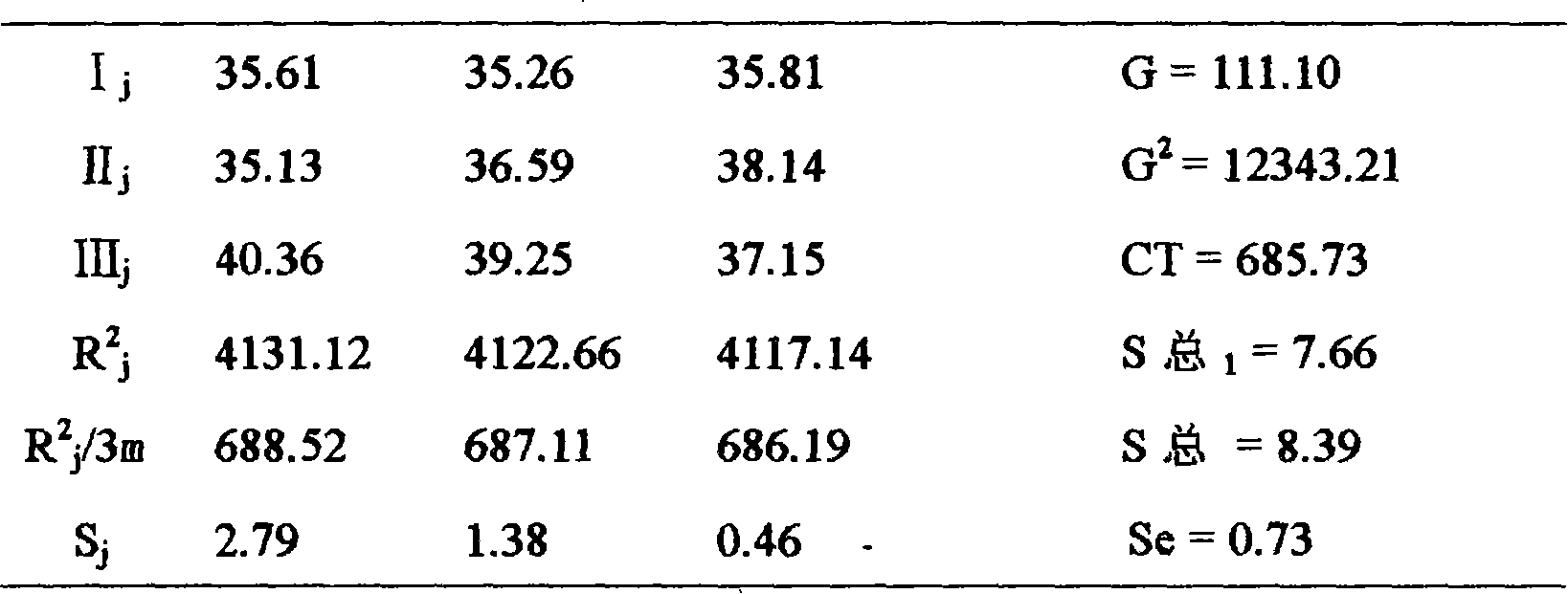Method for preparing cassava amylodextrin by acid-alcohol medium
A technology of tapioca starch dextrin and tapioca starch, which is applied in the field of preparing tapioca starch dextrin by alcohol-medium acid method, can solve the problems of long reaction time and achieve the effects of short reaction time, less investment, simple and practical process
- Summary
- Abstract
- Description
- Claims
- Application Information
AI Technical Summary
Problems solved by technology
Method used
Image
Examples
Embodiment 1
[0025] Process flow of cassava starch dextrin alcohol medium acid hydrolysis:
[0026] Tapioca starch is hydrolyzed with acid in ethanol solution, heated to boiling point, refluxed and continuously stirred, after hydrolysis, the starch dextrin is separated by filtration, dispersed in distilled water, neutralized with NaOH, dehydrated, washed with distilled water, dehydrated with ethanol and dried overnight.
Embodiment 2
[0028] Determination of water holding capacity of tapioca starch dextrin:
[0029] The water holding capacity of 10% and 30% starch dextrin aqueous solution samples was determined by centrifugation. The sample was weighed and dispersed in distilled water at 20°C according to the specified concentration, and centrifuged at 7500r / min for 15min. Remove the water from the upper part of the tube and weigh it. The water holding capacity can be calculated by the following formula:
[0030] Water holding capacity = (the amount of water in the dispersed sample - the amount of water removed from the upper part of the centrifuge tube) / the amount of starch dextrin
Embodiment 3
[0032] Determination of hygroscopicity of tapioca starch dextrin:
[0033] Take about 2.5g of starch dextrin sample, put it in a desiccator, place it at 20°C for 1.5 days at different relative humidity, use sulfuric acid solutions of different concentrations to adjust the humidity of the closed environment, and measure the weight change of starch dextrin sample Hygroscopicity.
PUM
 Login to View More
Login to View More Abstract
Description
Claims
Application Information
 Login to View More
Login to View More - R&D Engineer
- R&D Manager
- IP Professional
- Industry Leading Data Capabilities
- Powerful AI technology
- Patent DNA Extraction
Browse by: Latest US Patents, China's latest patents, Technical Efficacy Thesaurus, Application Domain, Technology Topic, Popular Technical Reports.
© 2024 PatSnap. All rights reserved.Legal|Privacy policy|Modern Slavery Act Transparency Statement|Sitemap|About US| Contact US: help@patsnap.com










